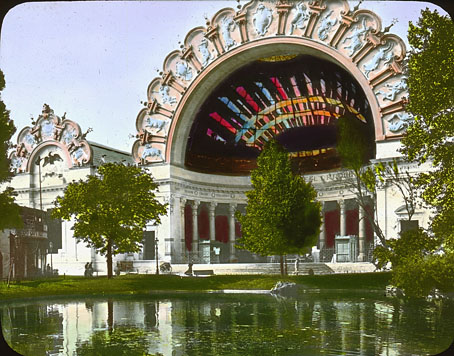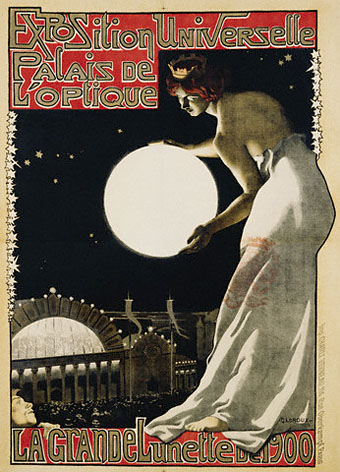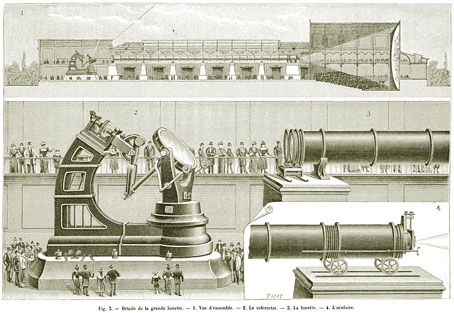Here at {feuilleton} the Paris Exposition Universelle of 1900 is never far away. This post is linked to those of the previous two days via the zodiac signs which decorate the lavish canopy on the Palais de l’Optique, one of the smaller exposition halls. The zodiac signs seem oddly inappropriate for displays of scientific endeavour until you discover that the principal attraction was François Deloncle’s Grande Lunette, or Great Telescope, one of the largest refracting telescopes ever built.
The astrological signs, then, signify the heavens which the telescope allowed an audience to view on a giant screen. The elegant poster advertising the attraction is by Georges Paul Leroux (1877–1957), and was discovered at Gatochy’s Flickr pages. The diagram below shows the colossal scale of thing and—appropriately—ought to be viewed at a larger size on Pignouf’s page. When you consider the small scale of film projections in 1900 the screenings from this monster must have been quite spectacular. The Exposition Universelle 3D Project has additional photos.
Previously on { feuilleton }
• Exposition Universelle films
• Exposition jewellery
• Exposition Universelle catalogue
• Exposition Universelle publications
• Exposition cornucopia
• Return to the Exposition Universelle
• The Palais Lumineux
• Louis Bonnier’s exposition dreams
• Exposition Universelle, 1900
• The Palais du Trocadéro




Do you happen to know what kind of copyright there is on the poster? It would be perfect as a poster for an event concerning light I’m working on.
/J
Hi Janna. I’m not a copyright lawyer but anything which is 110 years old as Leroux’s poster is should be copyright-free. Finding a larger copy might be a problem, however. Libraries often have these things in high-resolution versions but you might have to pay for access.